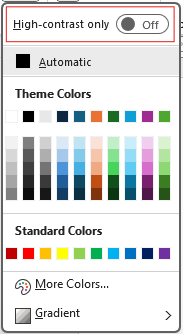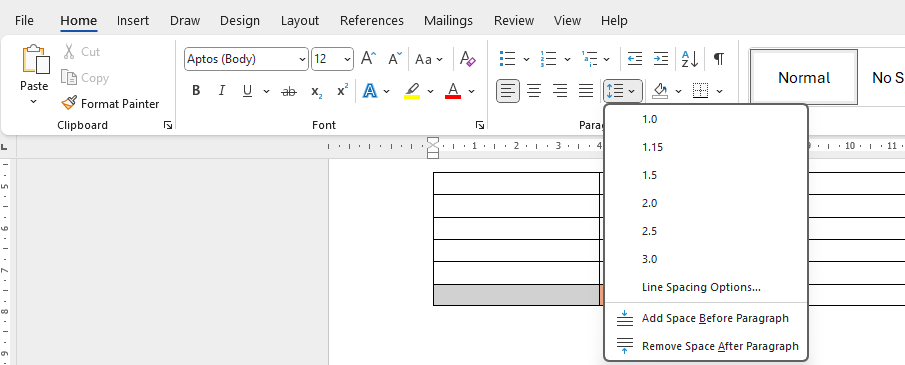
This guide provides step-by-step instructions and best practices to ensure your Word documents are accessible, making your content available to everyone.
Accessibility Assistant helps you to address accessibility issues as you write your document. It guides you on how to add an alt text to images, allowing people using screen readers to understand the image content. Additionally, it provides tips on using fonts, colors, and styles to make your Word documents more inclusive.
Note: Accessibility Assistant is now available exclusively for Microsoft Word on Windows. The features and instructions mentioned in this article apply only to the Windows version of Microsoft Word.
The Accessibility Assistant is a tool that reviews your content and flags accessibility issues in your document. In Word, the Accessibility Assistant automatically runs in the background, detecting accessibility issues and sending reminders in the status bar.
Select Review and then Check Accessibility to open the accessibility pane, where you can review and fix accessibility issues.
To use the features described in this article, open a new document in Word or access an existing one.
The text in your document should be easy to read, with enough contrast against the background color.

Alt text helps users who are blind or have low vision understand the content of visual elements. These visual elements include pictures, SmartArt graphics, shapes, groups, charts, embedded objects, ink, and videos.
Note: If the visual content is decorative, then select the Mark as decorative checkbox
Use a simple table structure with column headers. Nested tables, empty cells and merged or split cells may confuse the reader, making it hard to convey useful information.

Using fixed-width tables in Word files can cause several accessibility issues. They don't adjust well to different screen sizes or zoom levels, making content hard to read on mobile devices or when zooming in. Screen readers may struggle with the fixed structure, leading to confusion for people who are blind or have low vision.
Fixed-width tables can also cause text to overflow or get cut off, making it difficult to access all the information.
Additionally, because screen magnifiers only enlarge a portion of the screen, cutting off content or requiring excessive scrolling, users who use the screen magnifiers may find it challenging to view the content properly. For better accessibility, use flexible widths and ensure a clear table structure.
Use the built-in title and subtitle styles for your document's title and subtitle. These styles are designed to be easily scanned both visually and with assistive technology. Headings should provide a well-defined structure and serve as navigational landmarks

Note: Organize headings in the prescribed logical order; do not skip heading levels. For example, use Heading 1, Heading 2, and then Heading 3, rather than Heading 3, Heading 1, and then Heading 2.
For the step-by-step instructions on how to use the headings and styles, see: Improve accessibility with heading styles.
In Word, a paragraph banner is a visual element often used to emphasize or highlight a specific paragraph within a document. It typically consists of a horizontal line, or a decorative border placed above or below the paragraph.
This formatting technique helps draw attention to the paragraph, making it stand out from the surrounding text. Paragraph banners can be customized with different line styles, colors, and thicknesses to suit the document's design and purpose.

People who use screen readers have the option to scan a list of links in the document. Links should convey clear and accurate information about the destination. You can also add ScreenTips that appear when your cursor hovers over text or images that include a hyperlink.
For the step-by-step instructions on how to create accessible hyperlinks and ScreenTips, go to Create accessible links in Word and Create or edit a hyperlink.
To link a place in the same document:
Note: Avoid using link texts such as “click here,” “see this page,” “go here,” or “learn more.” Instead, include the destination page's full title.
To make documents easier for screen readers, use small chunks like bulleted or numbered lists. Avoid plain paragraphs in the middle of lists to prevent confusion. This ensures accurate navigation and enhances readability for all users.
Text can appear to “blend together” on a page (the lines of text squeeze into each other). To make reading easier, you can increase the line spacing between sentences and add space before or after paragraphs.

For the step-by-step instructions on how to adjust the spacing, go to Adjust indents and spacing in Word.
Immersive Reader in Microsoft Word enhances readability with features like Read Aloud, Text Spacing, Syllable Breakdown, and Line Focus. Access it via the View tab and select Immersive Reader.
For more information, visit the Use Immersive Reader in Word.